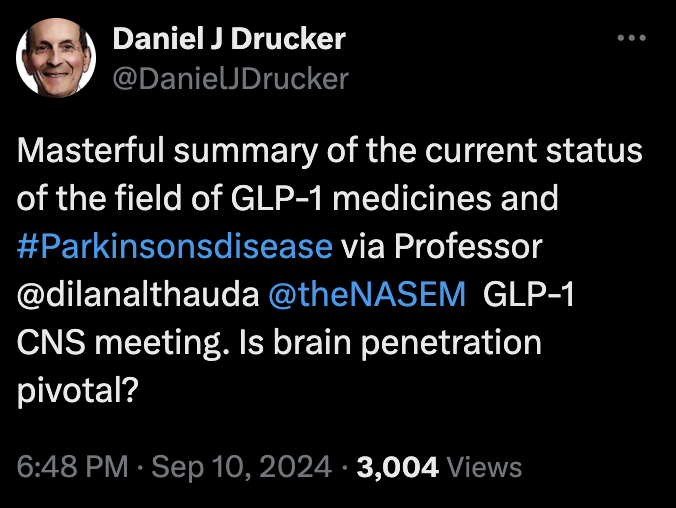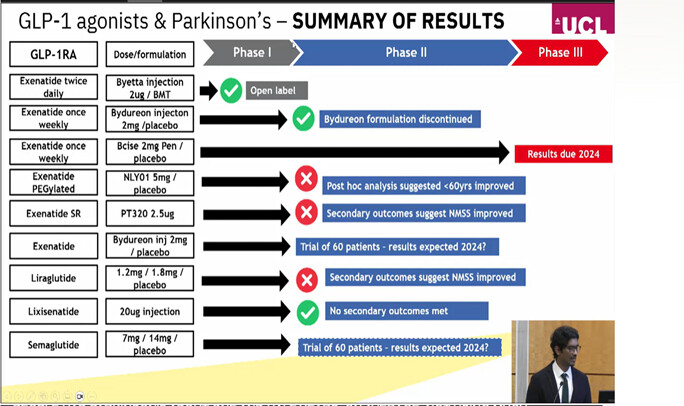Looks like those who started SGLT2i 10 years into this period already had lower PD risk : Possible this group is more health conscious or has access to better quality health care.
This kind of bias is unavoidable in association studies.
Looks like those who started SGLT2i 10 years into this period already had lower PD risk : Possible this group is more health conscious or has access to better quality health care.
This kind of bias is unavoidable in association studies.
Yes it’s weird but then she told me:
No, the survival curve for SGLT2 inhibitors does not reflect the effects of other drugs prior to the switch. It specifically represents the outcomes for patients from the point they began using SGLT2 inhibitors.
Additionally, the time-dependent model we employed in our analysis accounts for the length of time patients were on different antidiabetic drugs, ensuring the comparisons between medications with varying availability timelines, such as metformin and SGLT2 inhibitors.
If anyone understand please let me know…
Do you have any references that prove this is a common side effect?
The GLP-1 agonists cause weight gain a part of which is muscle loss. After the drug is discontinued, 75% of the weight comes back, but usually not the muscle. That’s what I’ve read and heard about Munjaro and Ozempic.


Full video of the workshop will be posted here in about two weeks: https://www.nationalacademies.org/event/43073_09-2024_examining-glucagon-like-peptide-1-receptor-glp-1r-agonists-for-central-nervous-system-disorders-a-workshop
In the RCS linear test, the occurrence of PD was negatively correlated with dietary niacin intake (nonlinearity: p = 0.232). In stratified analyses, dietary niacin intake was more strongly associated with PD and acted as an important protective factor in patients with fewer years of education (OR: 0.35, 95%CI: 0.13-0.93), married or cohabitating (OR: 0.71, 95%CI: 0.5-0.99), taking dietary supplements (OR: 0.6, 95%CI: 0.37 0.97), non-smokers (OR: 0.57, 95%CI: 0.39-0.85), those with hypertension (OR: 0.63, 95%CI: 0.63-0.95), coronary artery disease (OR: 0.77, 95%CI: 0.6-1), and stroke (OR: 0.75, 95%CI: 0.88-0.98), but the interaction was not statistically significant in all subgroups. Dietary niacin intake was inversely associated with PD risk in US adults, with a 23% reduction in risk for each 10 mg increase in niacin intake.
This may a good reason to take niacin or one of the NAD boosters like NR or NMN.
Of course it is a Chinese paper, so take it with a grain of salt… or 100.
I wouldn’t jump to conclusions based on an association study about dietary niacin (even less so when it’s a Chinese study in Frontiers). However, there are ongoing RCTs of large dose NR in PD so we’ll soon have an answer to this question…
Thank God I was wrong: it seems that low-dose metformin might be great: Metformin decelerates aging clock in male monkeys - #15 by adssx (TBC though…)
(edit: I found a better description of this research)
This study (2021) found Parkinson’s patients have higher levels of Klotho in Cerebral Spinal Fluid (CSF) and lower levels of Klotho in their blood than controls.
In PD patients, Klotho in the CSF and alpha synuclein were inversely correlated: more Klotho, less damage.
https://www.sciencedirect.com/science/article/abs/pii/S135380202100287X
If I recall correctly, Dena Dubal (Klotho researcher) notes that Klotho does not cross the BBB in the Peter Attia interview, but she says it has a lasting effect on brain function for primates regardless.
It’s also noted that it does not cross the BBB in this study: Longevity factor klotho enhances cognition in aged nonhuman primates | Nature Aging
Here’s a curious paper (I’ve searched for it here, but if I missed it being posted before, I apologise). Maybe relevant to statin users?
Yeah we’ve gone over that before. Statins are either negative or neutral for PD risk, as well as other lipid lowering treatments are probably negative, but I’m unsure how to weigh PD risk vs. CVD risk, if someone has a family history of the disease.
Shared by @TomParkinson, n=2 and no placebo but, if confirmed, this would be MASSIVE: Acetyl-DL-leucine in two individuals with REM sleep behavior disorder improves symptoms, reverses loss of striatal dopamine-transporter binding and stabilizes pathological metabolic brain pattern—case reports 2024
According to the data, it appears—in principle—to be possible to stop, if not reverse the progression of Parkinson’s disease in the prodromal iRBD-stage.
They used 5 g/d of acetyl-DL-leucine (ADLL, also called acetylleucine):
ADLL is commercially available under the trade name Tanganil® in France. It has been registered for the indication “vertigo” since 1960. The drug contains the racemate of acetyl-leucine, i.e., the inactive D-form and the bioactive enantiomer, the L-form of acetyl-leucine in equal parts.
[EDIT: ![]() “patient 1 showed a trend of decrease in the MoCA score and developed a mild cognitive impairment during the study” and the MoCA scores decreased…
“patient 1 showed a trend of decrease in the MoCA score and developed a mild cognitive impairment during the study” and the MoCA scores decreased… ![]() ]
]
Tanganil is sold OTC in France.
N-acetyl-L-leucine looks more potent (and safer?) than ADLL, and is developed by IntraBio as IB1001. IntraBio applied this year to the FDA for Niemann-Pick disease type C (NPC).
The mechanism of action is unclear. The authors write:
Acetyl-leucine (AL) has been found to have symptomatic and disease-modifying effects in animal models of lysosomal storage disorders (LSD), including Niemann-Pick disease type C (NPC) and GM2 gangliosidosis. Several formal LSD clinical trials with the active L-enantiomer, including our recent double-blind, placebo-controlled crossover phase 3 trial in NPC8, found that N-acetyl-L-leucine had rapid beneficial effects on neurological signs and symptoms and an excellent safety profile. The agent enters enzyme-controlled pathways that correct metabolic dysfunction and improves energy adenosine triphosphate (ATP) production. Lysosomal and mitochondrial dysfunctions have been proposed as important factors in the pathogenesis of PD. Therefore, AL might also have a favorable impact on the prodromal stage of PD by slowing down its progression already in the stage of iRBD.
The mention of Niemann-Pick disease in the context of PD made me think of ezetimibe and neuroprotection:
Possible hint for future exploration, and perhaps eze is safer than statins in PD (except simvastatin I guess), if you want to lower LDL.
Yes that’s why I’m using ezetimibe and not a statin. There’s also the paper showing reduced PD risk with ezetimibe. Not super strong evidence though, but still better than statins that are definitely shown to be detrimental in PD.
You know, I keep hearing about this, but I really do wonder how strong the evidence against statins is wrt. PD. The other day, I came across a very interesting paper, well worth reading:
Also I thought you might enjoy this pop sci writeup:
This is getting out into the public, not just the nerds on boards like ours.
Very strong: RCT + association studies + Mendelian randomization + potential mechanism (messes up with GLP-1 in the gut). Everything is in this thread.
Some earlier papers suggested a potential protective effect, but I think now the mainstream view is that statins are neutral at best. And some serious PD researchers and neurologists are advocating for statin discontinuation in people with PD. For instance, Connie Marras, Professor of Neurology at the University of Toronto (on the Scientific Advisory Board of the Michael J Fox Foundation and the Parkinson’s Foundation):